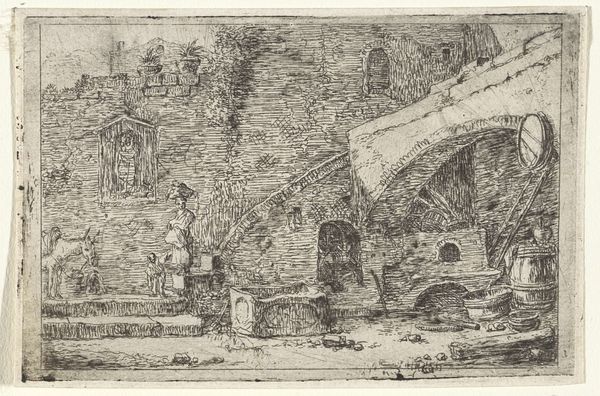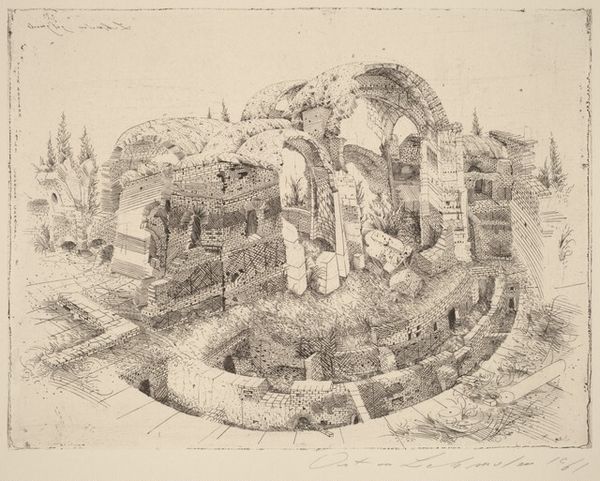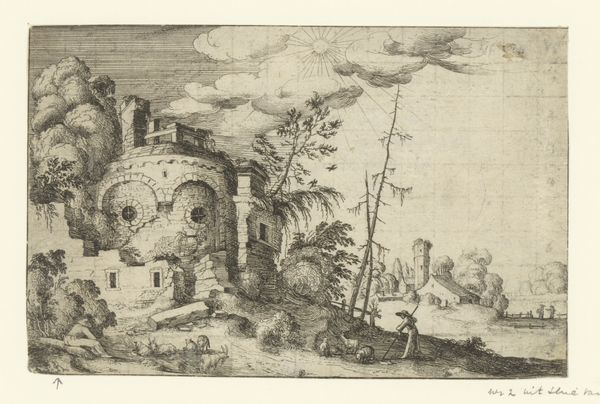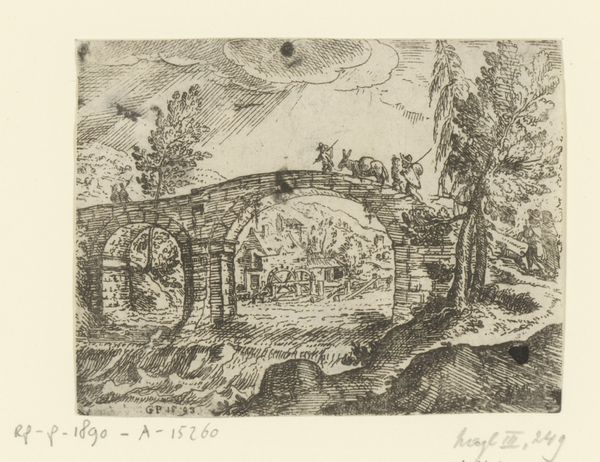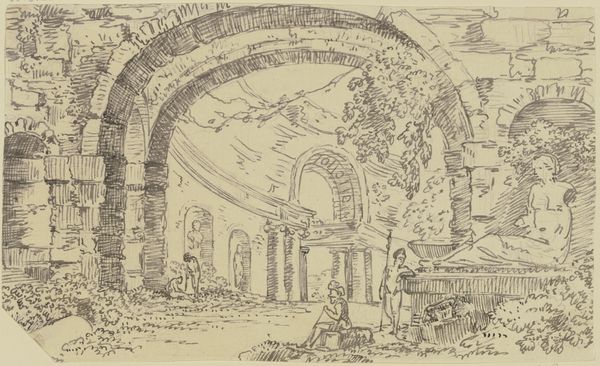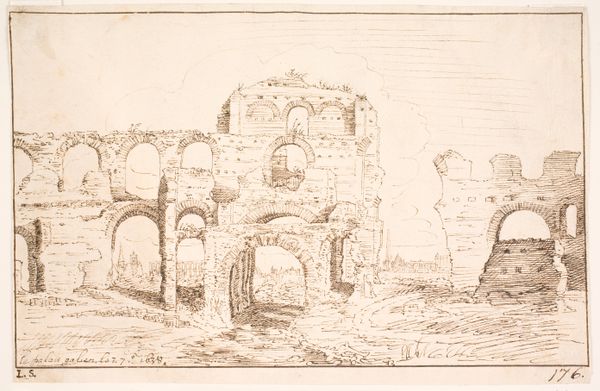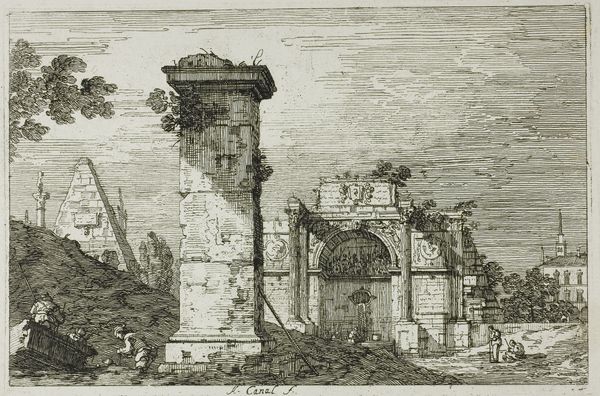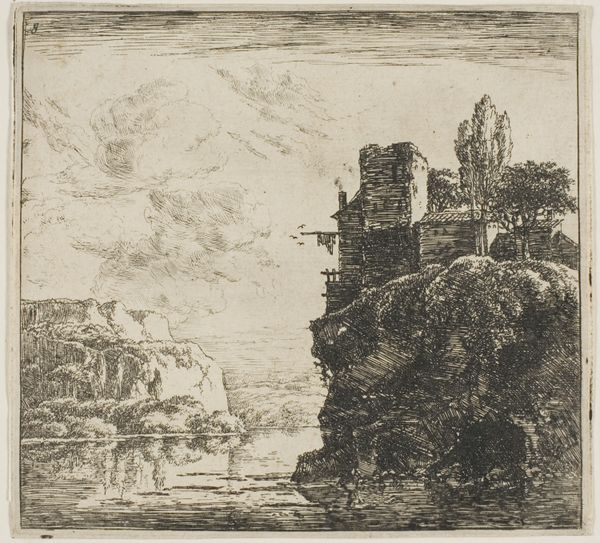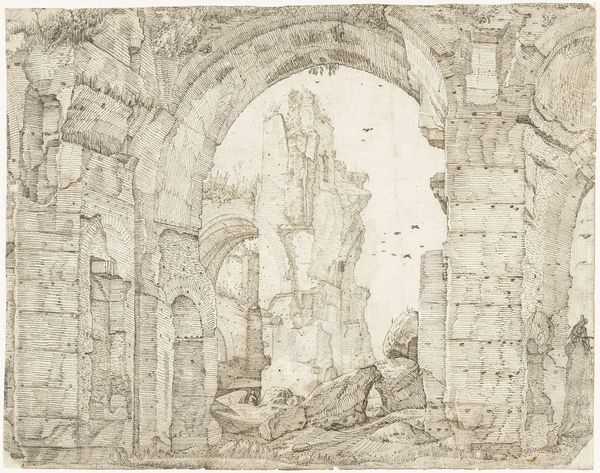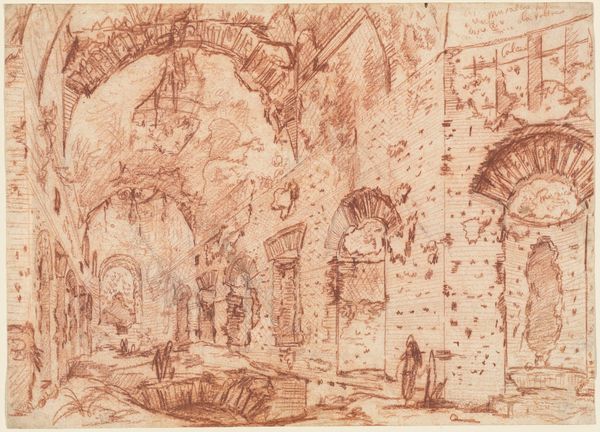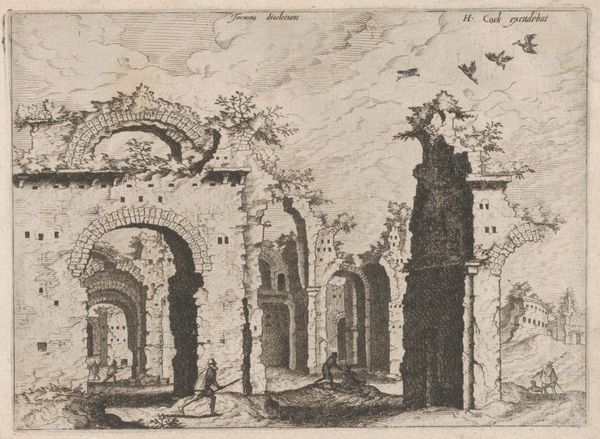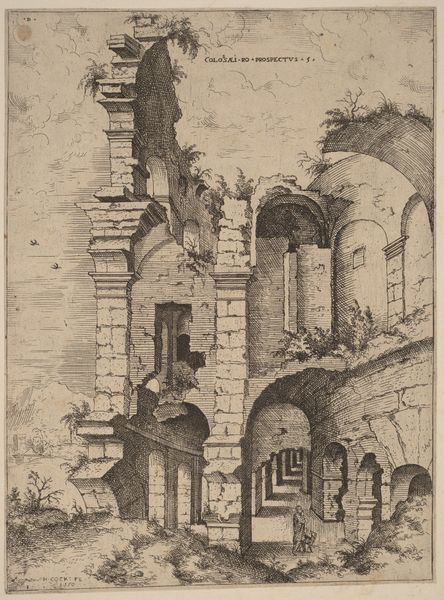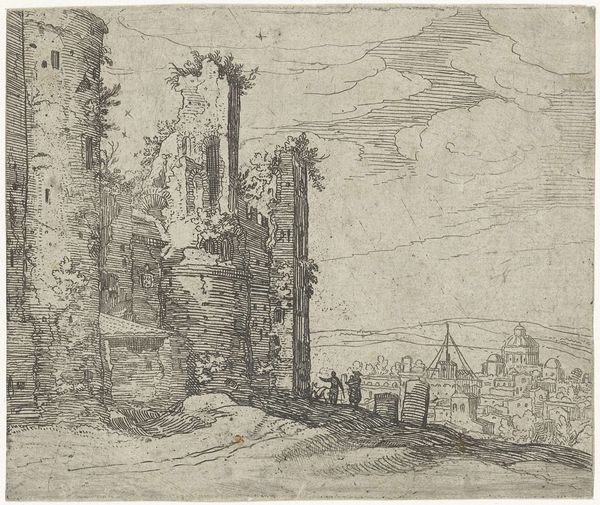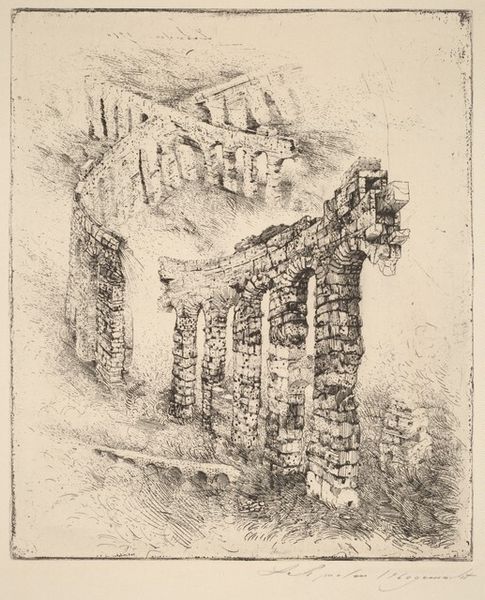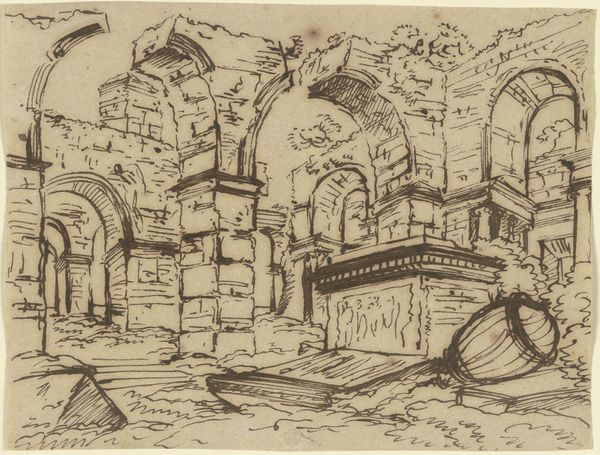
drawing, print, ink, engraving
#
pen and ink
#
drawing
#
ink drawing
# print
#
ink
#
geometric
#
cityscape
#
engraving
Dimensions: plate: 18.3 x 22.5 cm (7 3/16 x 8 7/8 in.) sheet: 34 x 41.3 cm (13 3/8 x 16 1/4 in.)
Copyright: National Gallery of Art: CC0 1.0
Editor: This is "Pantheon," a 1959 ink drawing by Anton Lehmden. I’m immediately struck by the almost brutalist depiction of what I assume is an architectural structure. It's simultaneously imposing and crumbling. What kind of weight does this imagery carry, in your opinion? Curator: The Pantheon, even rendered with such stark lines and a crumbling aesthetic, immediately evokes a sense of enduring power, doesn't it? Lehmden uses a symbolic vocabulary rooted in historical architecture, yet he also layers on a vision of decay. Notice how the radiating patterns around the celestial body feel almost…mechanistic? Is it a sun, a moon, or something else entirely? Editor: That's true, it feels very constructed. So, is this then a commentary on the impermanence of even the grandest human endeavors? Curator: Partly, but I think there's more at play. The very act of depicting a ‘pantheon’ suggests a gathering of gods, of ideals. What happens when those ideals become fragmented, reduced to geometric shapes or crumbling facades? Lehmden seems interested in this precise tension. Editor: So, the fragmentation speaks not just to physical decay, but also the potential dissolution of cultural memory or spiritual beliefs? Curator: Precisely! The architectural ruins are not simply 'ruins,' they become visual metaphors. How do you interpret the singular, almost mechanical 'sun' hovering above the scene? Editor: I hadn't thought about it as mechanical before, but it's true, it’s quite geometric. Maybe it represents a detached, rational perspective overlooking the decline. Curator: It adds a layer of critical observation, doesn't it? As if to suggest a new order imposed upon the old. Editor: That’s a powerful way to consider the layers of symbolism, highlighting how architecture can embody both enduring strength and inevitable decline. It definitely gives a new meaning to the name, juxtaposing that idea with reality.
Comments
No comments
Be the first to comment and join the conversation on the ultimate creative platform.
